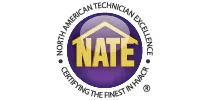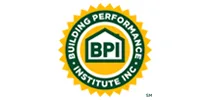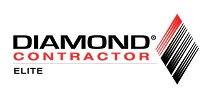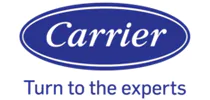Have you ever noticed that your thermostat says 72 degrees, but your home feels uncomfortably warm or cool? Or perhaps you’ve walked past your thermostat and noticed the temperature reading seems completely wrong compared to what you’re experiencing. You’re not imagining things – your thermostat might indeed be “lying” to you, and this common problem affects more homeowners than you might think.
Christian Heating, Cooling, Plumbing & Electrical has been helping families in Bucks, Chester, Delaware, and Montgomery Counties solve thermostat mysteries since 1989. Over the decades, we’ve discovered that thermostat accuracy problems are among the most frustrating HVAC issues homeowners face, often leading to uncomfortable temperatures, wasted energy, and unnecessary system strain.
The truth is that your thermostat is only as accurate as its location, calibration, and condition allow it to be. When any of these factors are compromised, your thermostat can give you false readings that make it impossible to maintain consistent comfort in your home. Understanding why these problems occur and how to address them can help you regain control over your home’s climate and potentially save money on energy costs.
Let’s explore the most common reasons why thermostats provide inaccurate readings and what you can do to ensure your temperature control system is giving you reliable information.
Location, Location, Location: The Most Common Culprit
The single most common reason for inaccurate thermostat readings is poor placement. Your thermostat’s location dramatically affects its ability to accurately sense your home’s temperature, and unfortunately, many thermostats are installed in less-than-ideal locations due to wiring constraints or aesthetic considerations rather than optimal functionality.
- Heat Sources and Your Thermostat: If your thermostat is located near heat-generating appliances, electronics, or light fixtures, it will consistently read higher temperatures than the actual ambient temperature in your living spaces. Common heat sources that can skew readings include televisions, computers, lamps, kitchen appliances, and even incandescent light bulbs in nearby fixtures.
Direct sunlight is particularly problematic for thermostat accuracy. A thermostat mounted on a wall that receives direct sunlight during part of the day will show artificially high temperatures during those periods, causing your air conditioning system to run more than necessary and potentially leaving other areas of your home inadequately cooled. - Cold Spots and Draft Issues: Conversely, thermostats located in naturally cooler areas of your home can cause the opposite problem. If your thermostat is positioned near an exterior door, in a drafty hallway, or on an exterior wall with poor insulation, it may consistently read lower temperatures than the rest of your home experiences.
This situation often leads to overheating, as your heating system continues to run in an attempt to bring the thermostat location up to the set temperature, while the rest of your home becomes uncomfortably warm. - Air Circulation Problems: Thermostats need adequate air circulation to accurately sense room temperature. Units installed in dead air spaces, behind furniture, or in areas with poor air movement may not respond quickly to temperature changes throughout your home. This can result in temperature swings and inconsistent comfort as your HVAC system struggles to maintain the desired temperature based on inaccurate feedback.
The Science of Thermostat Calibration
Even properly located thermostats can develop accuracy problems over time due to calibration drift. Understanding how thermostats measure temperature can help you recognize when calibration issues might be affecting your comfort.
- How Temperature Sensors Work: Most modern thermostats use electronic temperature sensors that rely on the electrical properties of materials that change predictably with temperature. Over time, these sensors can drift from their original calibration due to age, electrical interference, or environmental factors.
Older mechanical thermostats use bimetallic strips or other mechanical components that can lose accuracy due to wear, dust accumulation, or physical damage. These systems are particularly susceptible to calibration problems as they age. - Factors That Affect Calibration: Several environmental and operational factors can cause thermostat calibration to drift over time. Electrical interference from nearby devices, power surges, extreme temperature fluctuations, and even vibration from nearby equipment can all contribute to calibration problems.
Dust and debris accumulation inside the thermostat can also affect sensor accuracy. This is particularly common in homes with poor air filtration or during periods of home renovation when dust levels are elevated. - Signs of Calibration Problems: The most obvious sign of calibration issues is a consistent difference between your thermostat’s reading and the actual temperature in your home. If you notice that your thermostat consistently reads 3-5 degrees higher or lower than a reliable thermometer placed nearby, calibration drift is likely the culprit.
Other signs include difficulty maintaining consistent temperatures, frequent system cycling, or the need to set your thermostat significantly higher or lower than your desired temperature to achieve comfort.
Spot an issue with your thermostat? Schedule service before it becomes a bigger problem — contact Christian Heating, Cooling, Plumbing & Electrical today.
Age and Wear: When Thermostats Start Failing
Like all mechanical and electronic devices, thermostats have a finite lifespan. As they age, various components can begin to fail, leading to increasingly inaccurate temperature readings and unreliable operation.
- Electronic Component Degradation: Modern digital thermostats rely on sophisticated electronic components that can degrade over time. Capacitors, resistors, and integrated circuits can all develop problems that affect temperature sensing accuracy. These issues often develop gradually, making them difficult to notice until the inaccuracy becomes significant.
Battery-powered thermostats face additional challenges as batteries age. Low battery voltage can cause erratic behavior, inaccurate readings, and intermittent operation. Even thermostats with low battery indicators may experience accuracy problems before the warning appears. - Mechanical Wear in Older Systems: Older mechanical thermostats face different but equally problematic age-related issues. Bimetallic strips can lose their responsiveness, mechanical contacts can become corroded or worn, and moving parts can become sticky or binding.
Dust and debris accumulation is particularly problematic for mechanical thermostats, as it can interfere with the precise movements required for accurate temperature control. Regular cleaning can help, but eventually, mechanical wear makes replacement necessary. - Wiring and Connection Problems: As thermostats age, the electrical connections that link them to your HVAC system can develop problems. Loose connections, corroded terminals, and damaged wiring can all cause erratic behavior and inaccurate readings.
These electrical problems can be particularly frustrating because they may be intermittent, causing your thermostat to work properly sometimes while providing false readings at other times.
Environmental Factors That Affect Accuracy
Your home’s environment plays a significant role in thermostat accuracy, and changes in environmental conditions can cause previously accurate thermostats to begin providing false readings.
- Humidity’s Hidden Impact: High humidity levels can affect both the accuracy of temperature sensors and your perception of comfort. Some thermostat sensors are sensitive to humidity changes, which can cause readings to drift during particularly humid or dry periods.
More importantly, humidity significantly affects how temperature feels to occupants. High humidity makes temperatures feel warmer than they actually are, while low humidity has the opposite effect. This means that even an accurately calibrated thermostat might not provide the comfort you expect if humidity levels aren’t properly controlled. - Seasonal Temperature Extremes: Extreme outdoor temperatures can affect thermostat accuracy, particularly for units mounted on exterior walls or in areas that experience significant temperature fluctuations. The thermal mass of walls and surrounding materials can influence the microclimate around your thermostat, causing readings that don’t reflect the overall home temperature.
- Air Quality and Dust: Poor indoor air quality can affect thermostat accuracy over time. Dust, pollen, and other airborne particles can accumulate on sensors and inside thermostat housings, gradually affecting their ability to accurately sense temperature changes.
Homes with pets, smokers, or poor air filtration may experience more rapid accuracy degradation due to increased airborne contaminants.
Modern Smart Thermostat Challenges
While smart thermostats offer many advantages over traditional units, they also introduce new potential sources of accuracy problems that homeowners should understand.
- Wi-Fi and Connectivity Issues: Smart thermostats rely on internet connectivity for many of their advanced features, including remote temperature monitoring and automatic scheduling. When connectivity problems occur, these thermostats may not function as expected, potentially affecting their temperature sensing accuracy or responsiveness.
Software glitches, failed updates, or connectivity interruptions can all cause smart thermostats to behave erratically or provide inaccurate readings. - Learning Algorithm Problems: Many smart thermostats use learning algorithms to automatically adjust settings based on your preferences and schedule. However, these algorithms can sometimes make incorrect assumptions about your preferences, leading to temperature settings that don’t match your actual comfort needs.
If the learning function isn’t working properly, your thermostat might consistently set temperatures that feel wrong, even though the temperature sensor itself is accurate. - Sensor Integration Complexity: Advanced smart thermostats often integrate multiple sensors and data sources to determine optimal temperature settings. While this can improve comfort and efficiency when working properly, it also creates more opportunities for problems to develop.
Remote sensors, outdoor temperature data, and occupancy detection can all contribute to more accurate temperature control, but they can also introduce new sources of error if any component fails or provides incorrect information.
The Hidden Costs of Inaccurate Thermostats
Thermostat accuracy problems don’t just affect comfort – they can also have significant financial implications that many homeowners don’t realize.
- Energy Waste and Higher Bills: An inaccurate thermostat can cause your HVAC system to run more than necessary, leading to higher energy bills. If your thermostat consistently reads lower than the actual temperature, your heating system will run excessively. Conversely, if it reads higher than actual, your cooling system will work overtime.
Even a few degrees of inaccuracy can result in 10-20% higher energy costs, adding hundreds of dollars to your annual utility bills. Over the life of an inaccurate thermostat, these excess costs can far exceed the price of professional calibration or replacement. - Increased System Wear: Inaccurate thermostats can cause your HVAC system to cycle more frequently or run for longer periods than necessary. This additional wear can shorten your system’s lifespan and lead to more frequent repairs.
Short cycling, where your system turns on and off frequently due to inaccurate temperature feedback, is particularly damaging to HVAC equipment and can significantly reduce its operational life. - Comfort and Productivity Impacts: Beyond the financial costs, inaccurate thermostats affect your family’s comfort and well-being. Inconsistent temperatures can disrupt sleep, reduce productivity, and create ongoing frustration with your home’s climate control.
For families with members who have health conditions affected by temperature, accurate climate control becomes even more critical for maintaining health and comfort.
Diagnosing Thermostat Accuracy Problems
Before calling for professional service, there are several steps you can take to determine whether your thermostat is providing accurate readings.
- The Thermometer Test: Place a reliable digital thermometer near your thermostat, but not so close that it’s affected by the same environmental factors that might be influencing your thermostat. Wait for both devices to stabilize, then compare their readings.
A difference of 1-2 degrees is generally acceptable, but larger discrepancies indicate a problem that needs attention. Perform this test at different times of day and in different weather conditions to get a complete picture of your thermostat’s accuracy. - Monitoring System Behavior: Pay attention to how your HVAC system responds to thermostat adjustments. If you need to set your thermostat significantly higher or lower than your desired temperature to achieve comfort, this suggests accuracy problems.
Similarly, if your system seems to run constantly without reaching the set temperature, or if it cycles on and off frequently, thermostat issues may be contributing to the problem. - Professional Diagnostic Tools: HVAC professionals have specialized tools for testing thermostat accuracy and calibration. These tools can provide precise measurements and identify problems that might not be apparent through simple comparison testing.
Professional diagnosis can also identify related problems, such as HVAC system issues that might be affecting thermostat performance or environmental factors that contribute to accuracy problems.
Need expert thermostat diagnosis and repair? Contact Christian Heating, Cooling, Plumbing & Electrical now for professional service that restores accurate temperature control.
Solutions for Thermostat Accuracy Problems
Once you’ve identified that your thermostat is providing inaccurate readings, several solutions can restore reliable temperature control to your home.
- Professional Calibration: Many thermostat accuracy problems can be resolved through professional calibration. HVAC technicians have the tools and expertise to adjust thermostat sensors to provide accurate readings within acceptable tolerances.
Calibration is often the most cost-effective solution for newer thermostats that are otherwise functioning properly. However, calibration may not be possible or practical for very old units or those with significant mechanical wear. - Relocation Solutions: If poor placement is causing accuracy problems, relocating your thermostat may be the best solution. Professional installation in an optimal location can dramatically improve accuracy and system performance.
The ideal thermostat location is on an interior wall, away from heat sources and drafts, at a height of about 52-60 inches from the floor, and in an area with good air circulation that’s representative of your home’s overall temperature. - Upgrade to Modern Technology: For older thermostats with persistent accuracy problems, upgrading to a modern digital or smart thermostat often provides the best long-term solution. New thermostats offer improved accuracy, better calibration stability, and advanced features that can enhance both comfort and energy efficiency.
Smart thermostats with remote sensors can overcome location limitations by averaging temperatures from multiple locations throughout your home, providing more accurate overall temperature control. - Environmental Modifications: Sometimes, modifying the environment around your thermostat can improve accuracy without requiring relocation or replacement. This might include relocating heat sources, improving insulation around the thermostat location, or addressing air circulation problems.
Simple changes like moving furniture that blocks airflow or installing window treatments to reduce direct sunlight can sometimes resolve accuracy problems at minimal cost.
Preventing Future Thermostat Problems
Once you’ve resolved current accuracy problems, taking steps to prevent future issues can help ensure long-term reliable temperature control.
- Regular Maintenance: Include thermostat inspection and cleaning as part of your regular HVAC maintenance routine. Professional technicians can clean sensors, check calibration, and identify potential problems before they affect accuracy.
For battery-powered units, replace batteries annually or according to manufacturer recommendations, even if low battery warnings haven’t appeared. - Environmental Monitoring: Be aware of changes in your home that might affect thermostat accuracy. Home renovations, furniture rearrangement, or changes in nearby heat sources can all impact thermostat performance.
Monitor your thermostat’s accuracy periodically using the thermometer test, especially after any changes to your home’s layout or after extreme weather events. - Professional Installation: When installing new thermostats or relocating existing units, professional installation ensures optimal placement and proper calibration from the start. This investment in proper installation can prevent many common accuracy problems.
- Technology Updates: For smart thermostats, keep software updated and monitor for any changes in behavior that might indicate developing problems. Many manufacturers release updates that improve accuracy and reliability.
When to Call the Professionals
While some thermostat problems can be addressed by homeowners, many accuracy issues require professional diagnosis and repair to resolve effectively.
- Complex Calibration Problems: If your thermostat requires frequent recalibration or if calibration adjustments don’t resolve accuracy problems, professional evaluation can identify underlying causes and provide lasting solutions.
- Electrical Issues: Any problems involving thermostat wiring, electrical connections, or integration with your HVAC system should be handled by qualified professionals to ensure safety and proper operation.
- System Integration Problems: When thermostat accuracy problems are related to HVAC system performance or when multiple components need coordination, professional service ensures all aspects of your climate control system work together effectively.
- Upgrade Planning: Professional consultation can help you choose the right thermostat upgrade for your specific needs and ensure proper installation that maximizes accuracy and performance.
The Bottom Line on Thermostat Accuracy
Your thermostat is the brain of your home’s climate control system, and its accuracy directly affects your comfort, energy costs, and HVAC system performance. When your thermostat is “lying” to you, it’s usually trying to tell you something important about its condition, location, or calibration.
Understanding the common causes of thermostat accuracy problems empowers you to identify issues early and take appropriate action to restore reliable temperature control. Whether the solution involves simple maintenance, professional calibration, or upgrading to newer technology, addressing thermostat accuracy problems is an investment in your family’s comfort and your home’s energy efficiency.
Ready to stop guessing about your home’s temperature? Schedule your thermostat evaluation with Christian Heating, Cooling, Plumbing & Electrical today and discover how accurate temperature control can improve your comfort and reduce your energy costs.
Don’t let an inaccurate thermostat continue to compromise your comfort and waste your money. With proper diagnosis, calibration, or replacement, you can restore reliable temperature control and enjoy consistent comfort throughout your home. The solution to your thermostat’s “lies” is just a phone call away.








